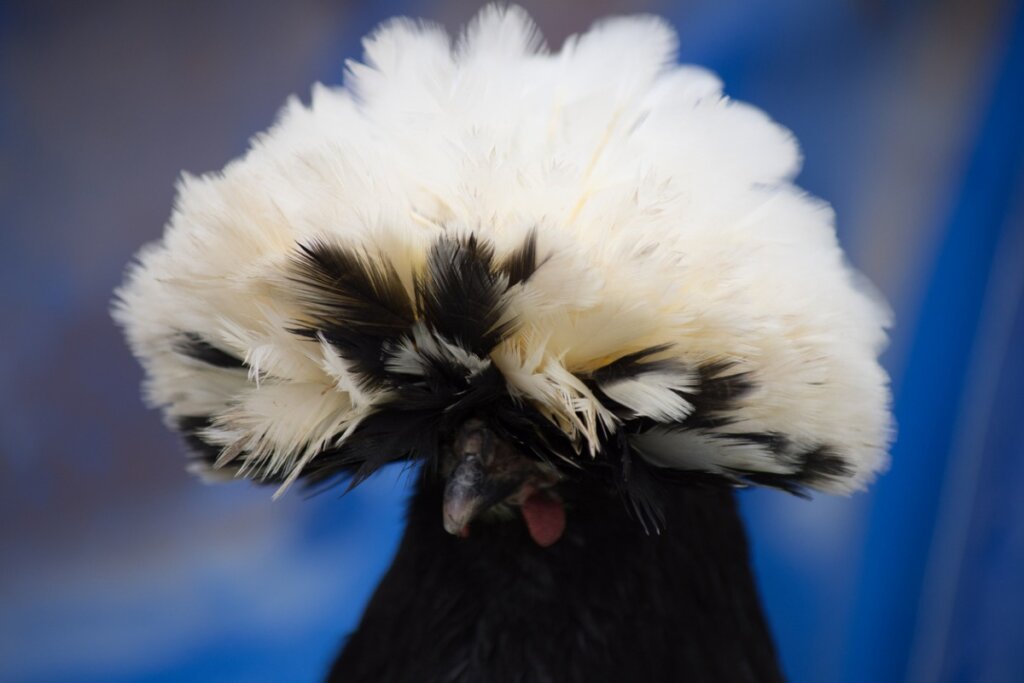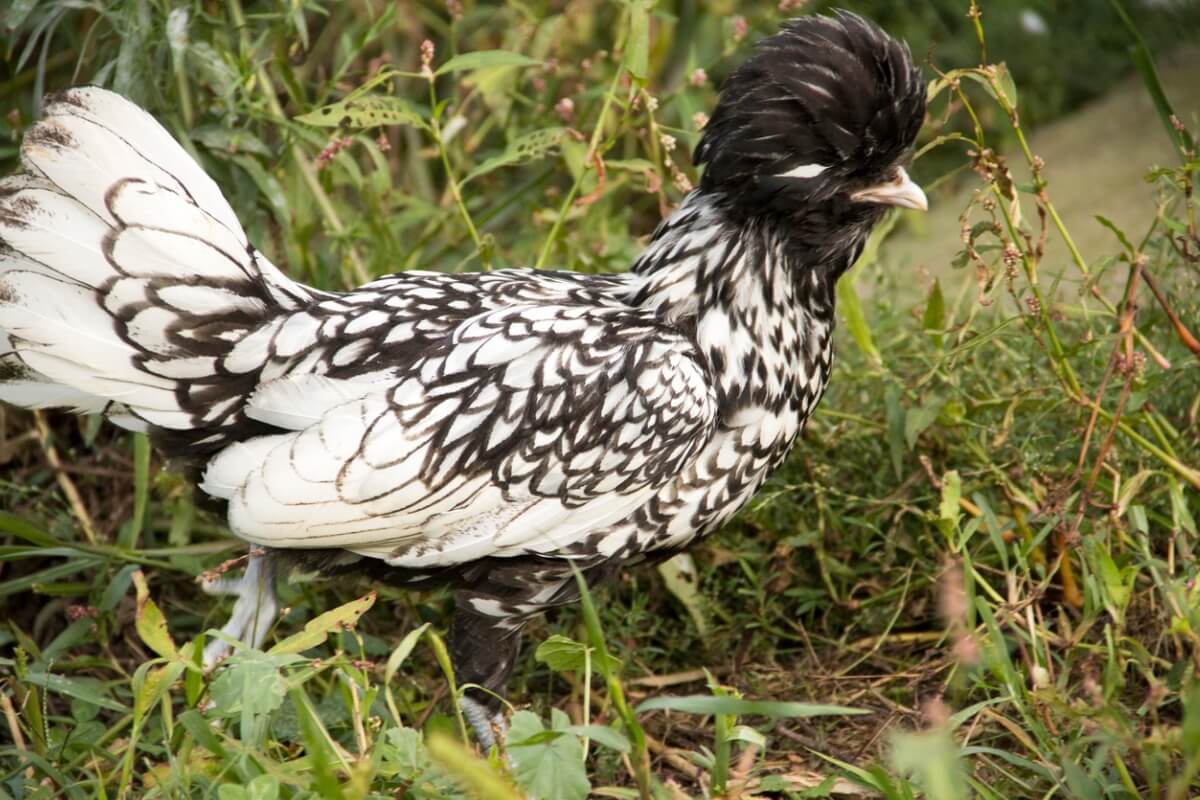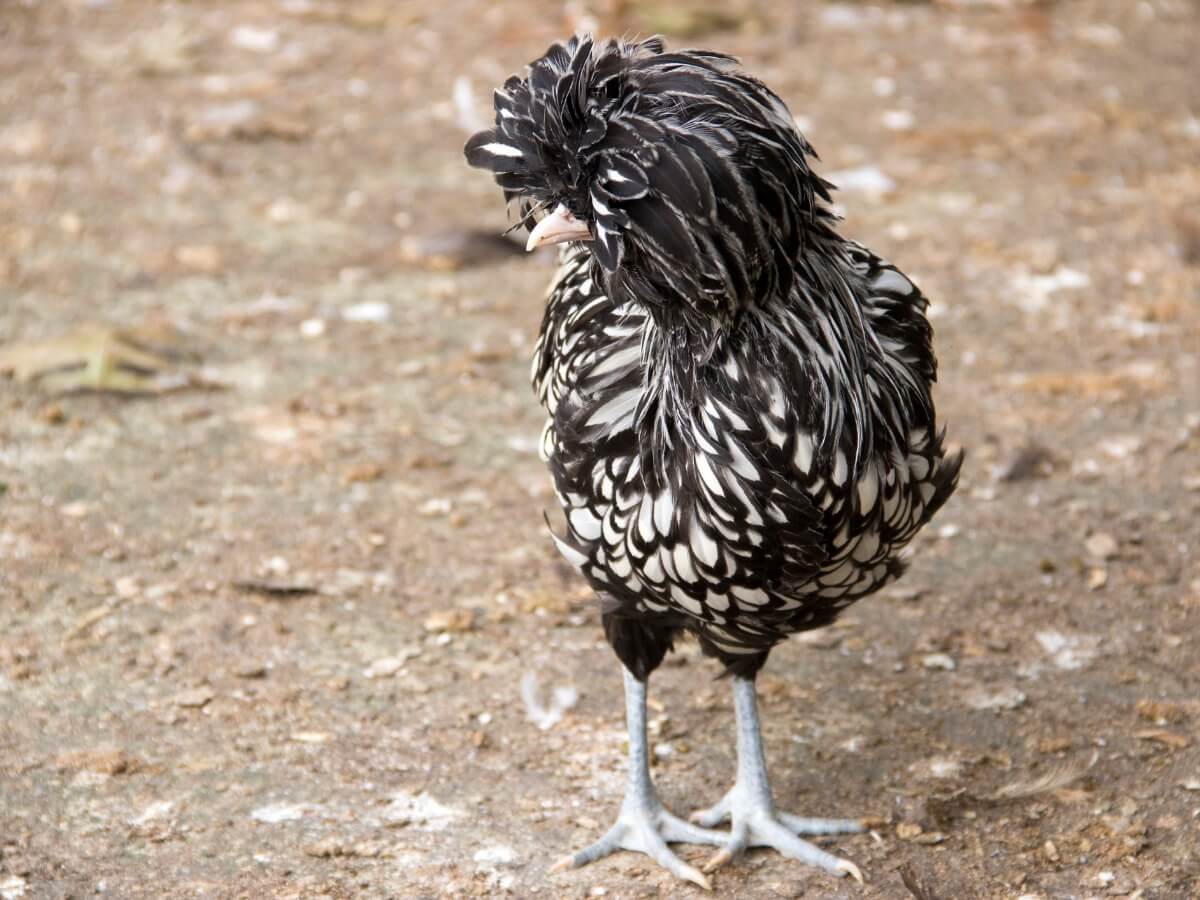Care and Raising of the Polish Chicken

Whether because of the crown of feathers that adorns its head or because of its unknown origin, the Polish chicken is a highly valued breed. Despite its name, it’s believed that the origin of this domestic bird is in the Netherlands and that it comes from some ancient race, brought to the continent by the Mongols.
Its most characteristic feature, the feather crown, can pose a problem. Sometimes this is so long that it prevents the bird from having correct vision, which could lead to abnormal behaviors. In the following lines, you’ll discover more curiosities about this breed of chickens and how you should look after them.
Characteristics of the Polish chicken
The Polish chicken is a European chicken breed, well known for its characteristic ‘V’ shaped crest. In any case, in most cases, this differential feature is hidden by the spectacular feather crown that it wears.
With unknown origins, it’s believed that this hen first appeared in the Netherlands, due to the legends about her and because of her name. Although it seems that it has something to do with the country, the name ‘Polish’ may derive from the Old Dutch word pol, which means head or top, due to the peculiar skull of these birds.
The skull bone of the Polish chicken has a significant protrusion, which gives the cranial cavity a vaulted appearance – if it were seen from the inside. This region, despite being well ossified, is very fine, so any blow or even the peck of another hen could cause serious neurological problems in the bird.
In fact, there’s a well-documented injury in the breed, known as a ‘twisted neck’. Although it’s more common to see it during the incorrect development of chicken embryos , certain brain damage can cause this neurodegenerative syndrome, which prevents the animal from positioning the neck correctly – and even walking.
Although in the past they were used as laying birds, today they’re famous show birds. They have a fairly long body and like to stand tall. With regard to the color of the plumage, the breed is accepted in a wide variety of shades.

Breed care
The Polish chicken is a bird with demanding requirements and high maintenance needs. This is due to its crest of feathers, which is an ideal place for the development of lice and mites.
Therefore, a review should be carried out from time to time, and regularly. Only then can any sign of external parasites be detected and stopped, before it becomes a serious infestation.
Again due to the feathered crest, special care must be taken with the eyes. As the crest is so long, it can get into the eyes and cause irritation. In more severe cases, conjunctivitis and even perforations or ulcers can develop.
Also related to the eyes and the crest, the latter can prevent or hinder the chicken’s vision. When the most important sense of the birds is affected, it’s recommended to place the feeder and drinker in one place and never move them.
Although there’s no problem with trimming the comb feathers on the Polish chicken, this makes little sense. Being show birds, they would lose all their appeal. However, the feathers can be collected in a scrunchie for the hen to see and at the same time keep her feathers. Of course, the ponytail should never be tightened, as this could irritate the skin.
A pen for the Polish chicken
The Polish chicken seems to live best in closed pens. These are much safer, since the bird knows where to find everything it needs and there’s no risk of getting lost. Due to the lack of vision, it’s very easy for the animal to walk away and then not know how to return.
If it’s kept free and then gets lost, the hen will panic if it can’t find its way back. However, not all chickens are like this and many have no problem living in the wild. As in many other things, it’s more of an individual matter.
Finally, in the same way that the feather crest is checked, the pen must be inspected to avoid the proliferation of mites and lice. Birds thrive much better in clean environments, regardless of breed and species.
Breeding and laying of eggs
If you want the Polish chicken to lay eggs for consumption, you should choose a good specimen. However, the laying of eggs is highly variable and never constant. Therefore, if you only want laying hens, it’s better to choose another breed.
These hens lay an average of 150 eggs per year, but they rarely hatch them. Thus, to raise Polish chickens, an electric incubator is necessary, where the offspring can develop without maternal care.

The Polish hen isn’t a breed that’s suitable for everyone, as it requires constant care to maintain its plumage. However, if you want to have it as a pet, it will be a great companion with a lot of personality. They’re daring, friendly, and affectionate birds, just like many other chickens.
All cited sources were thoroughly reviewed by our team to ensure their quality, reliability, currency, and validity. The bibliography of this article was considered reliable and of academic or scientific accuracy.
- Carol Ekarius. (2007). Storey’s Illustrated Guide to Poultry Breeds. North Adams, Massachusetts: Storey Publishing, pages 145–146.
- Coop, Y. (May, 2016). Keeping Polish chickens. Backyard Chickens. Disponible en: https://www.backyardchickens.com/articles/keeping-polish-chickens.72138/
- The Happy Chicken Coop (March, 2021). Polish Chickens: Temperament, Color and Egg Laying. Disponible en: https://www.thehappychickencoop.com/polish-chickens/
- Frahm, H. D., & Rehkämper, G. (1998). Allometric comparison of the brain and brain structures in the white crested polish chicken with uncrested domestic chicken breeds. Brain, Behavior and Evolution, 52(6), 292-307.
- Sullivan, G. E. (1974). Skeletal abnormalities in chick embryos paralysed with decamethonium. Australian Journal of Zoology, 22(4), 429-438.
